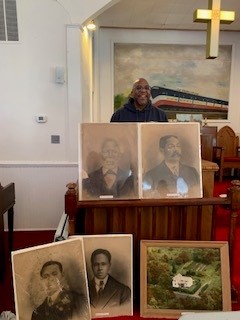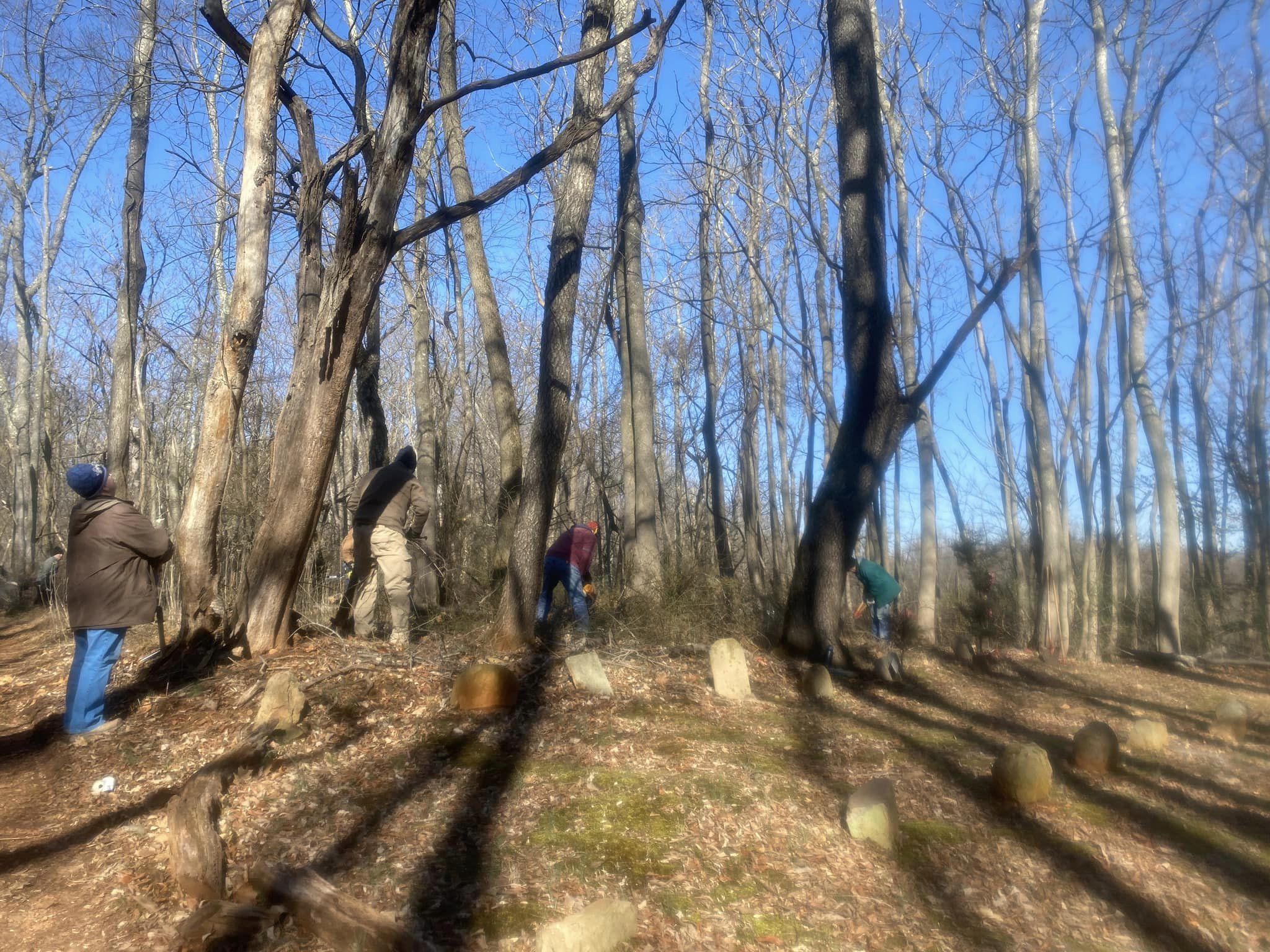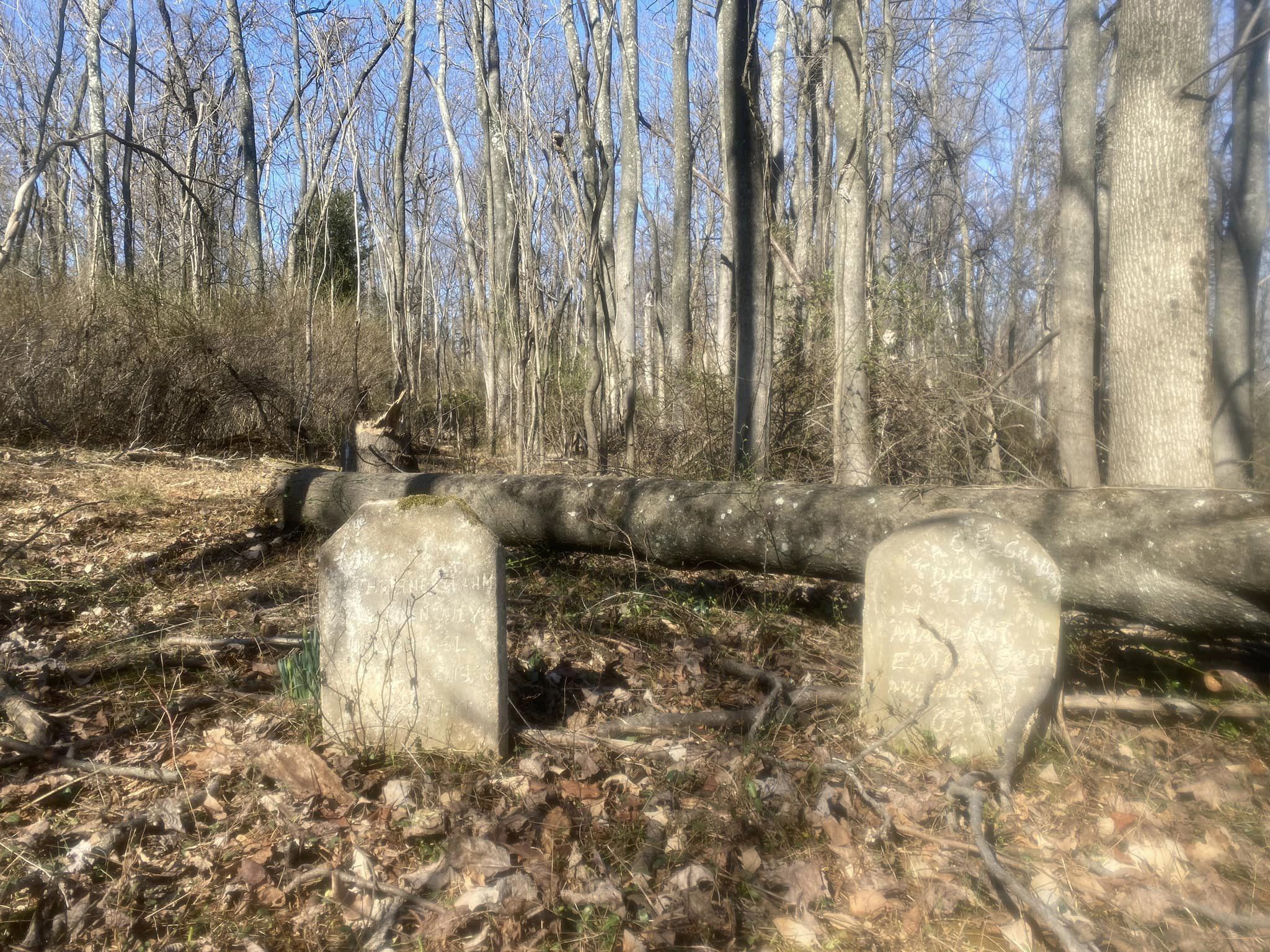On Saturday February 18, about 50 volunteer recruits gathered at the church in the Warren Historic Site in Dickerson. They had all answered the call to help clean up the Martinsburg Cemetery.
By 9 am, they arrived, layered up for the brisk temperatures and were ready to roll out. Pastor Chuck Copeland greeted them and then took them all to church in his own inimitable Pastor Chuck way. His voice was strong and commanding as he recounted the story of Martinsburg and his family’s prominent role in it.
He stood next to a portrait of his great, great grandfather, Albert Thompson, one of five founders of this historic black community. Albert bought two acres of land and built a two-story log home on that property in 1877. Next to Albert was a portrait of Albert’s son Otho Merle Thompson. Below them were pictures of Otho’s sons Wesley and James Thompson. There was also a photo of that first homestead in its more modernized state.
Families with the names Thompson, Thomas, Dorsey, and Graham, among others, had populated the landscape. It wasn’t easy. After generations of enslavement, many recently freed men and women had no experience planning and providing for their own families. Lacking a formal education or training, they turned to their strong bonds of community and experiences with the land for survival. These pioneers grew vegetables and raised livestock, providing the necessary building blocks to sustain their growing families.
These founders yearned to feed their souls too. They built the original church that stood on the hill in 1879. Later, they moved the entire church to an extension of Elmer School Road by setting the building on greased logs and pulling it down the hill by oxen. Eventually, it burned down. In 1903 they built the Warren United Methodist church that stands there today.
They wanted to educate their children. The one-story Martinsburg Negro School was built in 1886, serving 40 to 50 students in grades 1 through 7.
In 1914 they built a Loving Charity Hall that provided families with burial and medical insurance, services not available to them through White companies. The hall also served as a community meeting place where they had lectures, dances and showed movies and plays.
During its heyday, Martinsburg expanded to over 20 families, adding two stores and a post office.
Years and decades passed. Education and job opportunities were more abundant down County. The school closed in 1939. Today, the three anchor buildings are still intact (the Loving Charity Hall received some TLC a few years ago) – a rarity in historic black neighborhoods.
In the 1990’s Pastor Chuck moved his family back to the area. Something about his roots called him back to the land where it all began.
 That call connecting Pastor Chuck to his past stokes his passion today. It wasn’t long ago that he found himself in the field on that original hill looking for a connection to his ancestors. He told the volunteer brigade he noticed depressions in the ground and just stopped. He knew instantly what he had found. This was the burial ground of the old church.
That call connecting Pastor Chuck to his past stokes his passion today. It wasn’t long ago that he found himself in the field on that original hill looking for a connection to his ancestors. He told the volunteer brigade he noticed depressions in the ground and just stopped. He knew instantly what he had found. This was the burial ground of the old church.
The site of the old church was the starting point for the volunteers’ work. The crew was prepared with their clippers, rakes and even chain saws. They had to hack through the overgrown thorny thickets and fallen branches that challenged them at every turn, all the while watching for fieldstone markers or gravestones long settled in the underbrush. Undaunted, the power of the mighty won this day.
And what a site to behold — Recovered headstones, fieldstones and memorials were interspersed amongst the rows and rows of unmarked soil depressions holding the remains of those buried beneath them.
Pastor Chuck, and lead organizer Link Hoewing were so thankful for everyone’s efforts. Several locally known educators and historians participated in the event. Poolesville Seniors past presenters Ralph Buglass, Professor Christine Rai, along with monthly presenter Kenny Sholes, local writer Jeff Sypeck, and Commissioner Ed Reed all pitched in. Other than a few teenagers who admitted they were a bit “creeped out” by the experience, the overwhelming sentiment expressed was one of awe.
At the start of the day, noted cemetery archivist, Glen Wallace briefed the group, cautioning them to be careful of disturbing the ground where depressions indicating a grave were evident. Nature will win without constant vigilance. Despite any human disturbances to the area, Glen, with his high-tech techniques, expects to breathe new life into those long held secrets.
 This was a winning day for all who participated. While great progress was made, the surface literally has been scratched and more digging lies ahead. There will be future cemetery clean up opportunities. If you would like to participate, contact Link Hoewing at linkhoe@aol.com to be added to the notification list.
This was a winning day for all who participated. While great progress was made, the surface literally has been scratched and more digging lies ahead. There will be future cemetery clean up opportunities. If you would like to participate, contact Link Hoewing at linkhoe@aol.com to be added to the notification list.
You can bet Pastor Chuck with his indomitable will and dogged determination to continue shedding light and speaking truth to power will be there. How many attempts will it take to get to the heart of the matter? Only time will tell.

